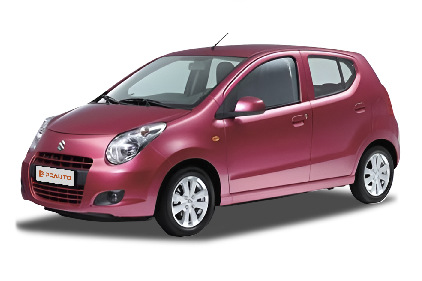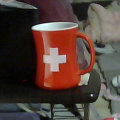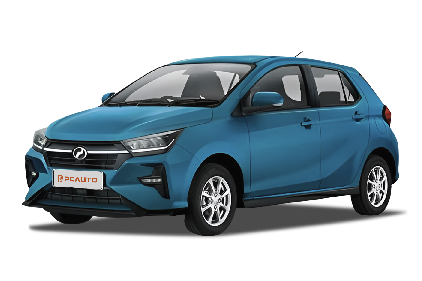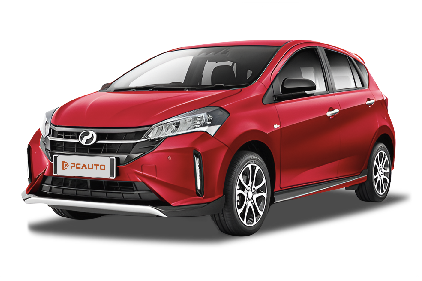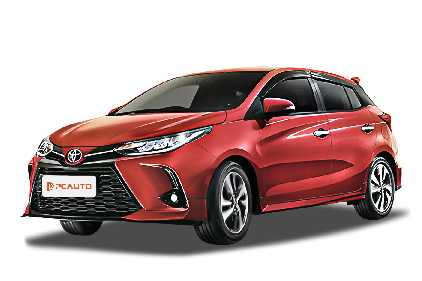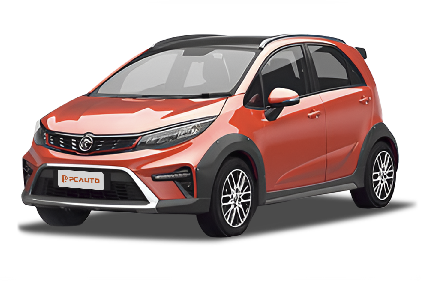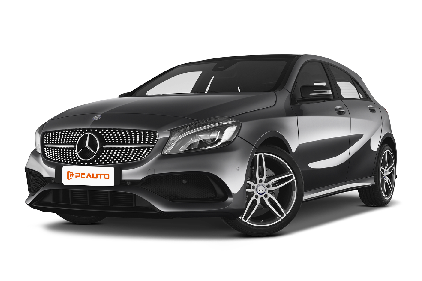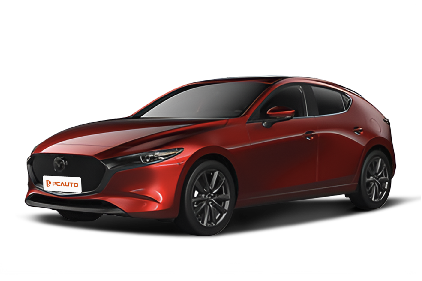Q
What is the mileage of Alto car 2014?
The fuel efficiency of the 2014 Suzuki Alto varies depending on the specific trim and driving conditions. From what we've seen in official figures, the manual transmission models typically return a combined fuel consumption of around 4.6 to 5.0 liters per 100 kilometers. Step up to the automatic, and you're looking at roughly 5.0 to 5.4 liters per 100 kilometers. Of course, real-world numbers can fluctuate based on traffic, how you drive, and even how well the car's been maintained.
As a budget-friendly city runabout, the Alto has struck a chord with Malaysian buyers thanks to its sipping fuel habits and easy-on-the-pocket maintenance costs. It's a solid pick for daily urban commutes. Let's face it, with fuel prices and the usual traffic snarls in Malaysia, how much a car drinks is a big deal when you're car shopping – and that's where the Alto's fuel-sipping nature really shines.
Pro tip: Keeping up with regular servicing and adopting smooth driving habits – think gentle acceleration and avoiding sudden stops – can help you squeeze even better mileage out of it and keep the car running strong for longer. If you need the nitty-gritty on a specific Alto variant's fuel economy, your best bet is to check the owner's manual or have a chat with your local Suzuki dealer for the most accurate info.
Q
How much is a 2014 Suzuki Alto?
If you're scouring Malaysia's used car market for a 2014 Suzuki Alto, you'll typically find prices hovering between RM15,000 and RM25,000. Of course, where exactly it lands in that range depends on the usual suspects: overall condition, mileage, service history, and trim level.
What really makes this little hatchback stand out is its wallet-friendly nature and impressive fuel sipping. It's a absolute gem for city commuting. Under the hood, you've got a peppy 1.0-liter three-cylinder engine that delivers smooth, predictable power while keeping those trips to the pump few and far between – we're talking around 5 liters per 100 km on average.
Running costs are easy on the budget too. Parts are readily available and affordable, which is no surprise given how many Altos are on Malaysian roads. That also means you've got a decent selection of used models to pick from. A pro tip though: always dig into the vehicle's history and give the mechanicals a thorough once-over before handing over cash. Splurging on a professional inspection to ensure everything's in good nick is never a bad idea.
On top of all that, its compact dimensions make weaving through city traffic and squeezing into tight parking spots a total breeze. All in all, it's a solid, value-for-money choice for anyone after an affordable entry-level runabout.
Q
What is the fuel average of Alto 2014?
According to official figures, the 2014 Suzuki Alto delivers a combined fuel economy of around 18 to 20 kilometers per liter here in Malaysia. Of course, your actual mileage will vary a bit depending on how you drive, the roads you take, and how well you keep up with maintenance. That little 660cc three-cylinder engine is all about being economical and practical—perfect for zipping around the city. Pair that with its lightweight body and either the 5-speed manual or 4-speed automatic gearbox, and it's no wonder it sips fuel so nicely.
Living with Malaysia's hot weather? Make sure you check the air filter and spark plugs regularly, and keep those tires properly inflated—around 200-220kPa is the sweet spot. Trust me, these small details really do make a difference to how much fuel you burn. And don't bother splurging on fancy high-octane stuff; good old RON95 is more than enough for this engine.
Want to stretch every liter even further? Easy—lay off the sudden acceleration and harsh braking, and try to cruise at a steady 60-80km/h when you can, that's where it really shines. Oh, and let's not forget the 35-liter fuel tank. Do the math, and that means a theoretical range of roughly 630 kilometers on a full tank. All in all, if you're a budget-conscious young driver or just need a reliable second car for the family, the 2014 Alto is definitely worth a look.
Q
What was the original price of the 2014 Alto?
Back in 2014, the Perodua Alto launched in Malaysia with an original price tag ranging from around RM34,000 to RM44,000, depending on the trim level and where you were buying it. Slotted as an affordable city runabout, this little hatchback was all about sipping fuel and getting the job done – perfect for young families on a tight budget or first-time car buyers.
Under the hood, you'd find a 1.0-liter three-cylinder engine, paired with either a manual or automatic gearbox. Power delivery? Smooth, but let's be real, it's more than enough for zipping around town. And that compact size? A total lifesaver when squeezing into those tiny parking spots on narrow city streets.
Since it's a joint effort between Perodua and Suzuki, the Alto was pretty well localized for Malaysia. That meant repair and maintenance costs were easy on the wallet, and spare parts were never hard to find – all factors that help keep its resale value holding up nicely in the used car market.
One thing worth noting: around 2014, the Malaysian government was pushing energy-efficient vehicle incentives. Some Alto variants might have qualified for tax breaks, which would have brought the actual selling price a bit below the official sticker. If you're eyeing a used Alto, I'd recommend checking the VIN (vehicle identification number) to dig up the specific specs and original tax records. That way, you can make sure you're getting a fair deal and know exactly what you're buying.
Q
What is the fuel consumption of a 2014 Suzuki Alto?
The 2014 Suzuki Alto, as a budget-friendly city car, really shines when it comes to fuel efficiency. From official specs and real-world driving, the manual transmission models clock in at around 4.5 to 5.0 liters per 100 kilometers combined, while the automatic versions are slightly thirstier, sitting at roughly 5.0 to 5.5 liters per 100 km. Of course, your actual mileage will vary depending on how you drive, the roads you take, and how well you keep up with maintenance.
Under the hood, there's a 1.0-liter three-cylinder engine. It's not going to win any drag races, but it's perfect for zipping around the city—especially in Malaysia's notorious traffic jams, where it’ll save you a pretty penny at the pump. For Malaysian drivers who prioritize fuel economy, the Alto makes a solid case. Plus, its compact size makes squeezing through tight streets and nailing parking spots a breeze.
Want to stretch those liters even further? Stick to regular maintenance, keep your tires properly inflated, and ease up on the sudden acceleration and hard braking. These simple tips don’t just boost fuel efficiency—they’ll help keep your Alto running strong for longer too.
Q
Is the Suzuki Alto 2014 a good car?
The 2014 Suzuki Alto is a solid little city runabout that really hits the mark for budget-conscious drivers, especially over in Malaysia where its fuel-sipping ways and tiny footprint make it a popular pick. Under the hood, you've got a 1.0-liter three-cylinder engine that delivers smooth, predictable power—perfect for your daily grind around town. And let's talk about that fuel economy: we're looking at roughly 5 liters per 100 kilometers, which is pretty hard to beat if you're watching every sen.
Sure, the interior's on the snug side, but Suzuki did a decent job with the layout. Front passengers will find it reasonably comfy, though the back seats are better suited for kids or short hops rather than full-grown adults on long drives. Equipment-wise, the base models come with the essentials: air-con to beat the Malaysian heat and a basic sound system to keep you entertained. Step up to the higher spec, and you might get some nice-to-haves like extra airbags and ABS, which is always good for peace of mind.
Now, a heads-up: since this is an older model, if you're looking at a used one, **always** check the condition and service history thoroughly. It's non-negotiable. On the flip side, the Alto scores points for being cheap to fix, and parts are pretty easy to come by in Malaysia, which is a big plus for long-term ownership.
So, if your main needs are zipping around the city without breaking the bank, the 2014 Alto is definitely worth a spot on your shortlist. But if you need more space or the latest tech, you might want to shop around for a newer model in the same class.
